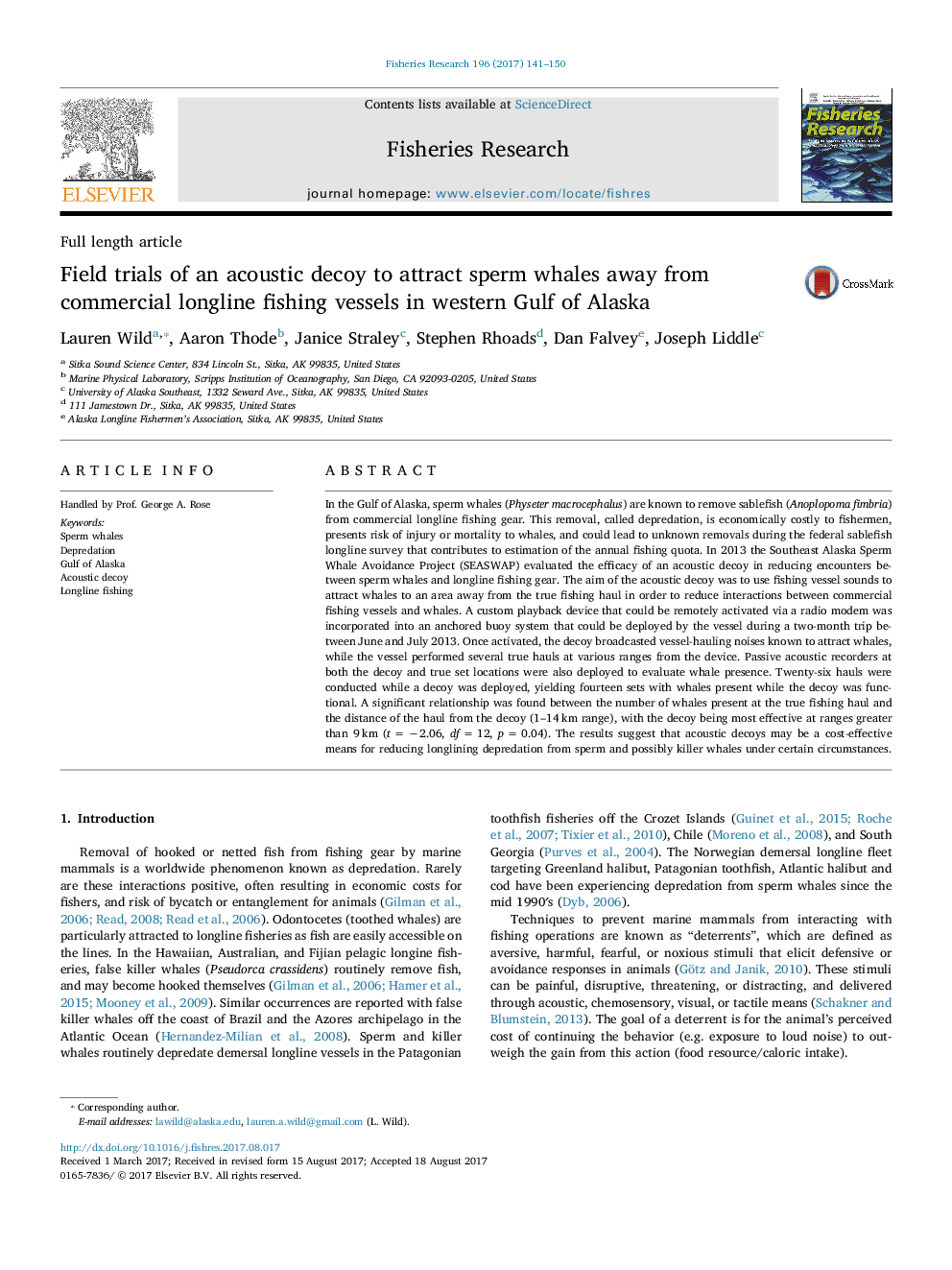ترجمه فارسی عنوان مقاله
آزمایش های صحرایی از سر و صدای آکوستیک برای جذب نهنگ های اسپرم دور از کشتی های تجاری ماهیگیری خلیج فارس در غرب آلاسکا
عنوان انگلیسی
Field trials of an acoustic decoy to attract sperm whales away from commercial longline fishing vessels in western Gulf of Alaska
| کد مقاله | سال انتشار | تعداد صفحات مقاله انگلیسی |
|---|---|---|
| 95488 | 2017 | 10 صفحه PDF |
منبع

Publisher : Elsevier - Science Direct (الزویر - ساینس دایرکت)
Journal : Fisheries Research, Volume 196, December 2017, Pages 141-150
ترجمه کلمات کلیدی
نهنگ های عنبر، اعتیاد، خلیج آلاسکا، کیک آکوستیک، ماهیگیری یخ زده،
کلمات کلیدی انگلیسی
Sperm whales; Depredation; Gulf of Alaska; Acoustic decoy; Longline fishing;

